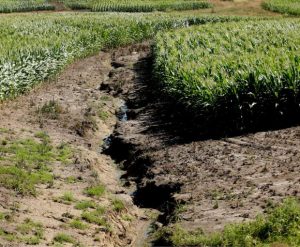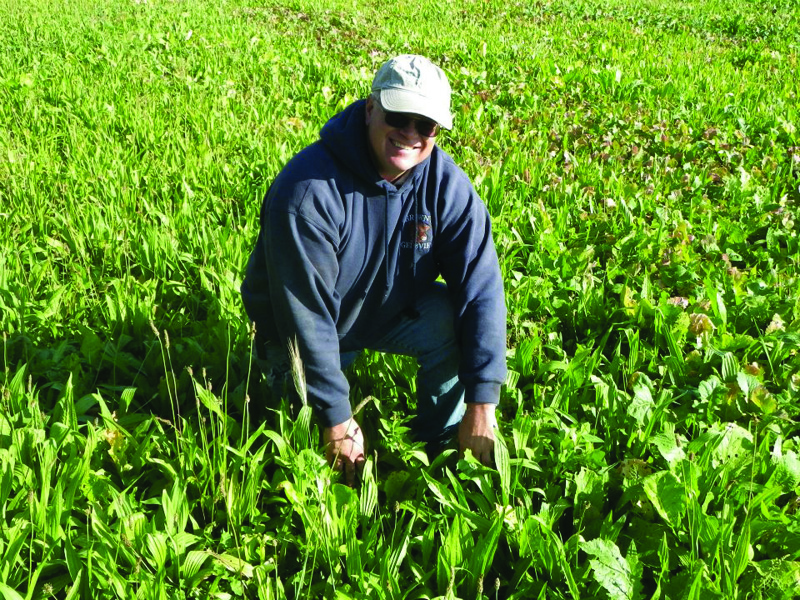For years many people worked to promote interest in “soil quality,” a term meant to encompass the physical, chemical and biological properties that make well-managed soils rich, productive, and alive. But to Ray Archuleta, a leading voice for soil conservation within the USDA’s Natural Resources Conservation Service, a new approach to soil management was needed, including a new phrase to capture the essence of what the conventional ag “paradigm” was doing to soil quality and the rural environment.
The new phrase gaining ground in the farm community, among scientists and conservationists, and in policy circles, is “soil health.” Archuleta explains the need for these two new words in an excellent story on the growing soil health movement. He is quoted saying:
“Health denotes life and function. Quality is like the quality of a couch or something.”
One proven way to build soil health is incorporating a vibrant cover crop between corn, soybean, wheat, and other cash crops. The photo in the upper, right corner features a North Dakota farmer, Gabe Brown. He is one of thousands of farmers who have made remarkable progress in building soil health through the use of cover crops, like the brassica shown in the photo.
The article by Steven Rosenzweig is entitled “How a New Way of Thinking About Soil Sparked a National Movement in Agriculture” and appears in the online magazine Ensia.
It accurately maps the evolution of “soil health” as a framing concept that has helped farmers understand the roots of healthy, productive soils.
Likewise, the soil health movement has found an non-threatening way to focus attention on changes in farm management practices needed to either preserve already healthy soils, or restore health to soils degraded by erosion, loss of organic matter, compaction, the incrementally greater toxic load from the annual, spring mix of fertilizers and pesticides, and in most cases, combinations of the above.
Rosenzweig reports that major funders across the ag space from Monsanto to Walmart, have been lending their support to the cause. He also notes the important catalytic role played by the Farm Foundation and Samuel Roberts Noble Foundation, via what was first called the “Soil Renaissance” project.

About a year ago, the “Soil Renaissance” project morphed into the Soil Health Institute, one of the organizations breaking ground and investing in the promotion of soil health in the scientific community, across extension and in educational circles, and among policy makers. The two quarterbacks behind the Soil Health Institute were Bill Buckner, the CEO of the Noble Foundation and Neil Conklin of the Farm Foundation. These individuals and their organizations created needed space and provided resources to refine and operationalize the concept of soil health.
Restoring the health of America’s soils is, of course, a work in progress. The movement is clearly gaining momentum and recognition, and most importantly, instilling confidence in farming systems that are designed to promote life within the soil, as opposed to the alternative.
For a glimpse of what this promising movement is about, check out the short video on the homepage of the Soil Health Institute.
Source: Steven Rosenzweig, “How a New Way of Thinking About Soil Sparked a National Movement in Agriculture,” Ensia, April 10, 2017.

